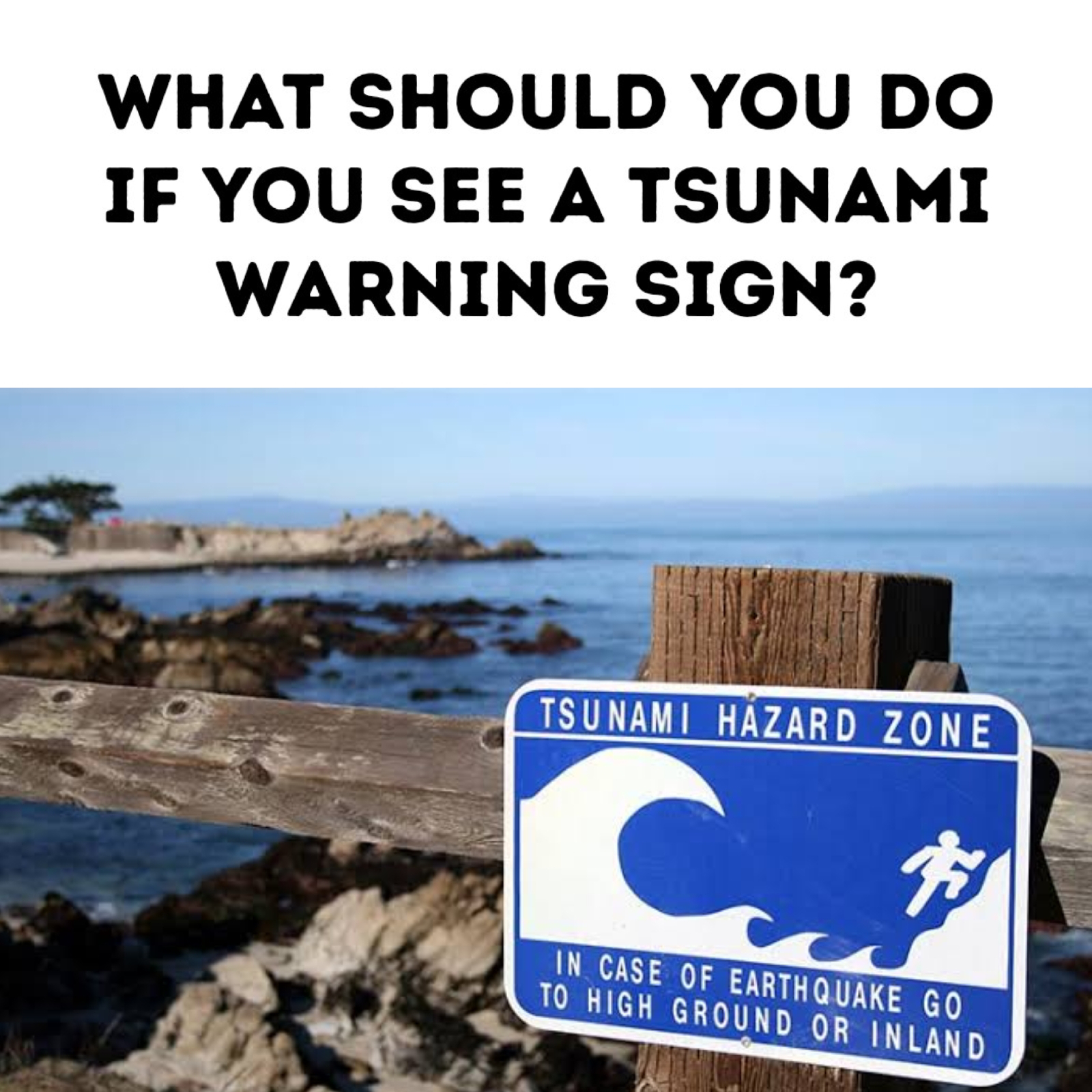On the Coast and See a Tsunami Warning Sign? Here’s Exactly What to Do
Imagine this: you're on a beautiful vacation, walking along a stunning coastline. The sun is warm, the waves are crashing gently, and then you see it—a sign with a large wave symbol, labeled "Tsunami Hazard Zone" or "Tsunami Evacuation Route."
For a moment, your heart might skip a beat. But these signs aren't there to cause panic. They are there to empower you with life-saving information. Seeing one is an opportunity to be prepared, not scared.
So, what should you actually do when you see a tsunami warning sign? Let's break it down into simple, actionable steps.
First, Understand What the Sign Means
It's crucial to know that there are two main types of tsunami signs, and they tell you different things:
Tsunami Hazard Zone Sign: This sign tells you that you are currently in an area that could be flooded during a tsunami. If a tsunami were to occur, this area is not safe.
Tsunami Evacuation Route Sign: This sign, often with an arrow, points you in the direction of safer, higher ground. It’s your pathway to safety.
Seeing a sign does not mean a tsunami is happening right now. It means you are in a region where tsunamis are a possibility, and the local authorities have created a plan to keep people safe.
![A generic image of a Tsunami Evacuation Route sign with an arrow pointing inland would be perfect here.]
Your Immediate Action Plan: A Two-Part Guide
Your response depends on one simple question: Is there an active threat, or are you just noticing the sign during a normal day?
This is the most common scenario. You're simply exploring, and you notice the sign.
Stop and Acknowledge: Don't just walk past it. Take a moment to read the sign and look around. You are in a Tsunami Hazard Zone.
Mentally Map Your Escape: Look in the direction the "Evacuation Route" arrow is pointing. Identify the path you would take. Is it up a specific road? Towards a hill? Make a mental note of it.
Discuss a Plan: If you're with family or friends, point out the sign and briefly discuss what you would do. Say something simple like, "Hey, see that sign? If there's ever an earthquake, we need to head that way, uphill." This simple conversation can save lives.
Know the Natural Warning Signs: Now is the perfect time to remind yourself of nature's tsunami warnings. An official alert might not be the first sign you get. Be prepared to act if you experience any of these:
A strong earthquake that makes it hard to stand.
A sudden and unusual rise or fall in sea level (the water may pull back surprisingly far from the shore).
A loud, roaring sound coming from the ocean, similar to a train or a jet engine.
If you see a sign and there's no immediate threat, your job is to be aware and be prepared.
If you are in a Tsunami Hazard Zone and you feel a major earthquake or see other natural signs, do not wait for an official siren or alert. The earthquake IS the warning.
Evacuate Immediately: As soon as the shaking stops, move. Your priority is to get to high ground as quickly and calmly as possible.
Follow Evacuation Route Signs: This is what they are for! Follow the arrows inland and uphill.
Go on Foot if Possible: Roads will likely be jammed with traffic or damaged. Your own two feet are often the most reliable way to evacuate. Help those around you who may need assistance.
Aim for High Ground: Your goal is to get at least 100 feet (about 30 meters) above sea level or at least one mile (1.6 kilometers) inland. The further you go, the safer you'll be.
Stay There: A tsunami is not a single wave, but a series of waves that can arrive over several hours. Do not return to the coast until you are told it is safe by emergency officials.
Crucial Mistakes to Avoid
Don't Ignore the Signs: They are placed in specific locations for a reason, based on scientific research and historical data.
Don't Go to the Shore to Watch: Never, ever go towards the coast to see a tsunami. The wave moves faster than you can run, and it's a fatal mistake.
Don't Rely on Your Car: In a panic, traffic can create a gridlock, trapping you in the hazard zone. Walking or biking is often a better choice.
Don't Assume the First Wave is the Last: The largest wave is often not the first one. Stay at your safe location until you get the all-clear from authorities.
Conclusion: A Sign of Safety, Not Fear
A tsunami warning sign is one of the best tools a coastal community has. It's a silent guardian, giving you the knowledge you need to protect yourself and your loved ones.
By understanding what it means and having a simple plan, you transform a moment of potential worry into an act of empowerment. So next time you see one, give it a nod of respect, know your route, and continue to enjoy the beautiful coast with the confidence of being prepared.

Comments
Post a Comment